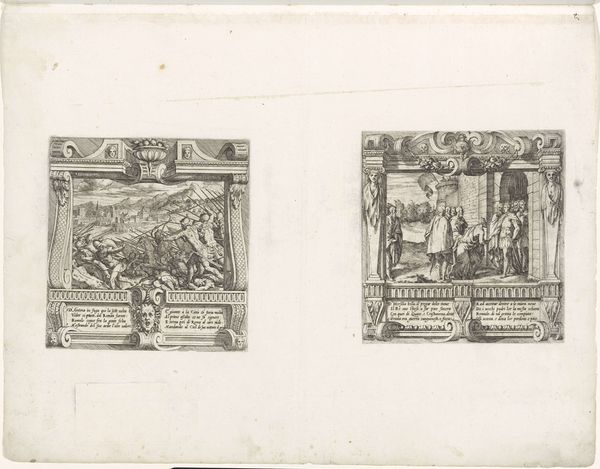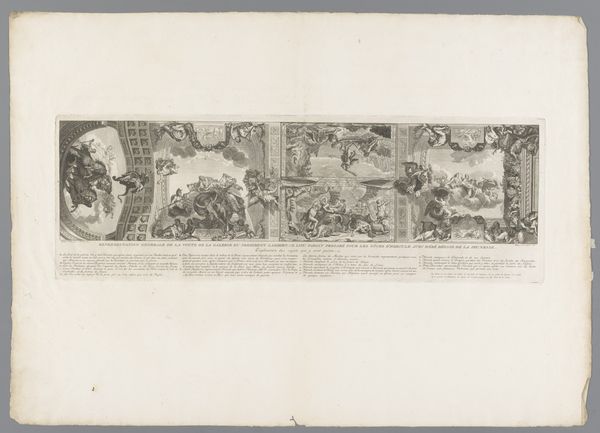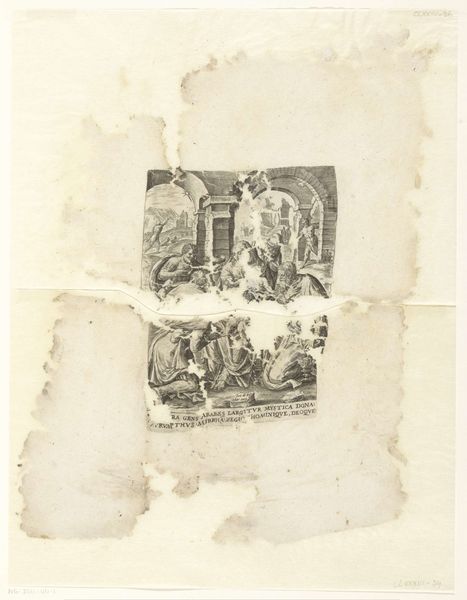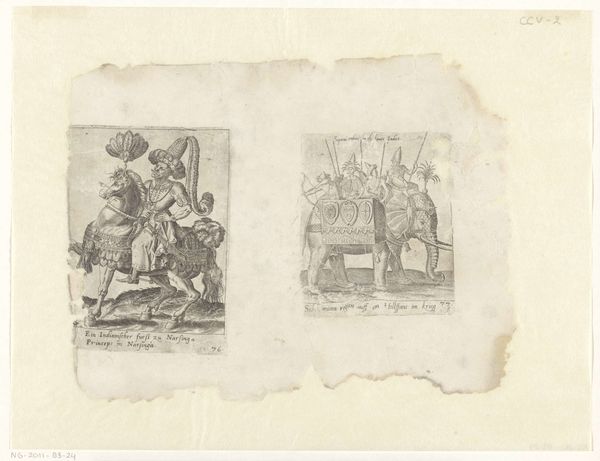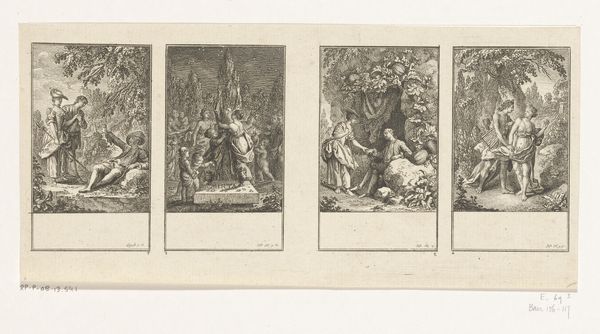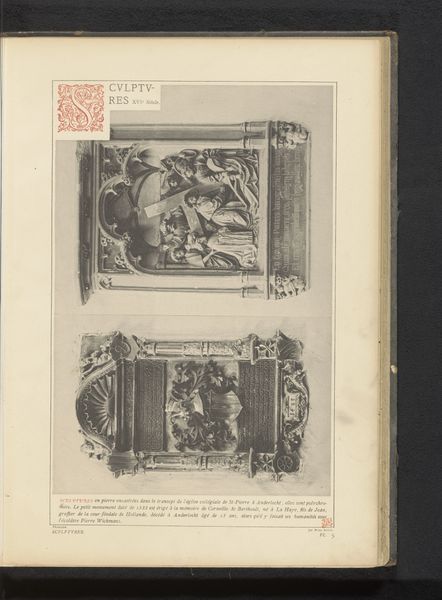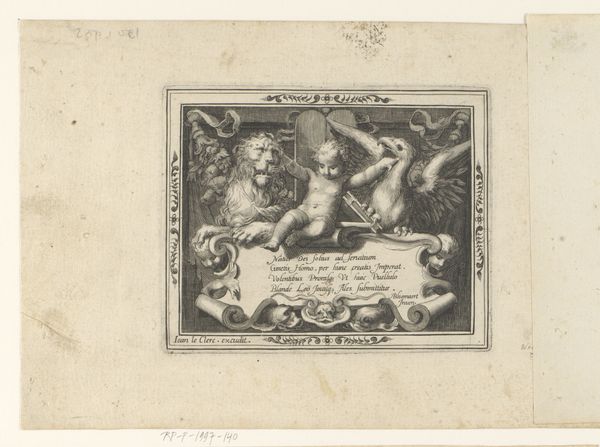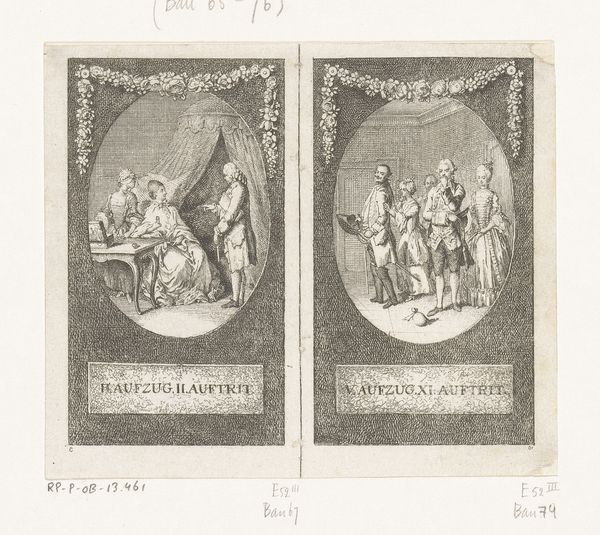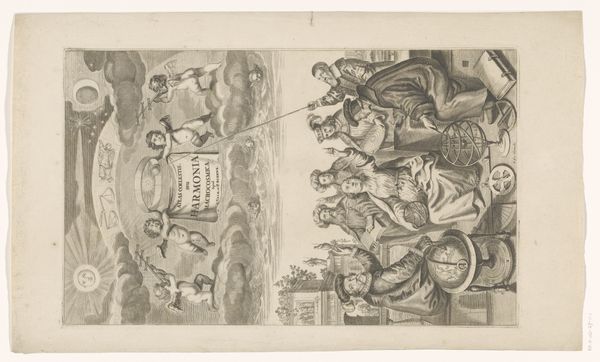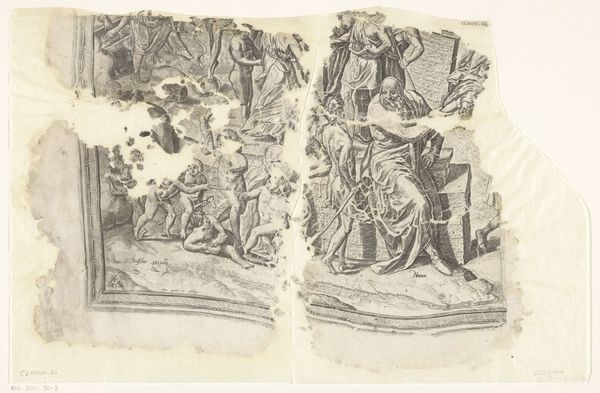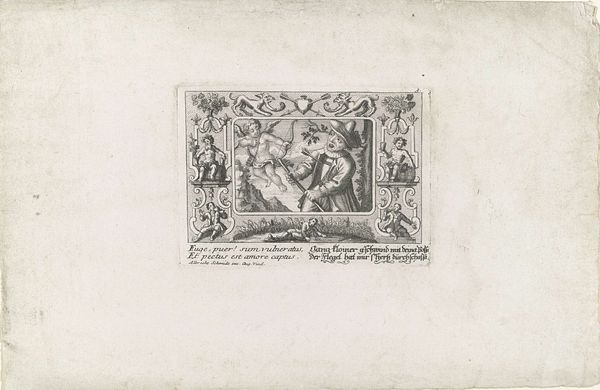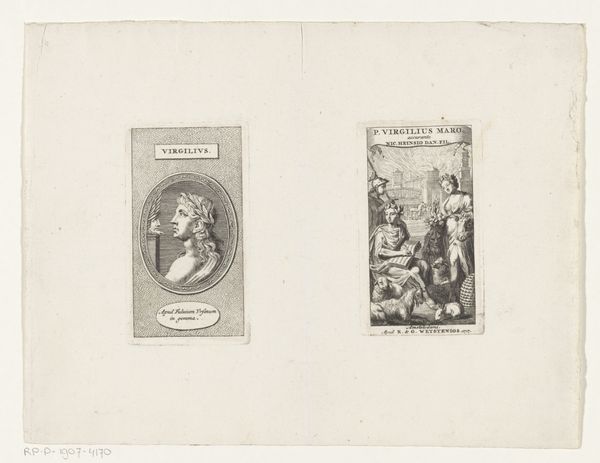
Romulus sticht de stad Rome / Acron en zijn soldaten vallen Rome aan 1568
0:00
0:00
print, paper, ink, engraving
#
narrative-art
# print
#
figuration
#
paper
#
form
#
ink
#
line
#
history-painting
#
italian-renaissance
#
engraving
Dimensions: height 194 mm, width 182 mm, height 195 mm, width 185 mm, height 400 mm, width 542 mm
Copyright: Rijks Museum: Open Domain
Editor: So, we're looking at "Romulus sticht de stad Rome / Acron en zijn soldaten vallen Rome aan," a 1568 engraving by Giovanni Battista Fontana. It's fascinating to see these two scenes side by side, a foundation and a conflict. There's a real tension here, the birth of something versus violent opposition. What story do you see being told in these images? Curator: It's key to remember the historical context in which Fontana was working. In 1568, Europe was embroiled in religious and political conflict. This print, presenting the foundation of Rome alongside an act of war, functions almost as a commentary. It alludes to the violence inherent in nation-building and the constant threat to any established order. Editor: So, it's less about a glorious past and more about… the realities of power? Curator: Precisely. The Renaissance saw a renewed interest in classical antiquity, but often sanitized. Fontana, through his juxtaposition, is suggesting a less romanticized, perhaps even cynical, view of history. Consider how prints like this circulated. They were not just decorative; they were carriers of ideas, shaping public perception of history and power. Look at the stylistic choices: the meticulous detail, the dramatic poses... Editor: Yes, there’s a lot happening, a controlled chaos. Were these images meant to promote discussion? Curator: Absolutely. Prints had a vital public role, contributing to debates about leadership, the nature of conflict, and even national identity. To whom did these images speak, and how might different viewers at the time interpret this pairing of themes? The images invited people to actively engage with history and reflect on its implications for the present. Editor: That’s a fantastic insight. I initially saw it as a simple depiction of Roman history, but understanding its cultural context really deepens its meaning. Curator: Indeed. Seeing art as embedded within its historical moment unveils the layers of meaning intended by the artist. Hopefully, we all have a better grasp on how these images played a public role during this period.
Comments
No comments
Be the first to comment and join the conversation on the ultimate creative platform.
